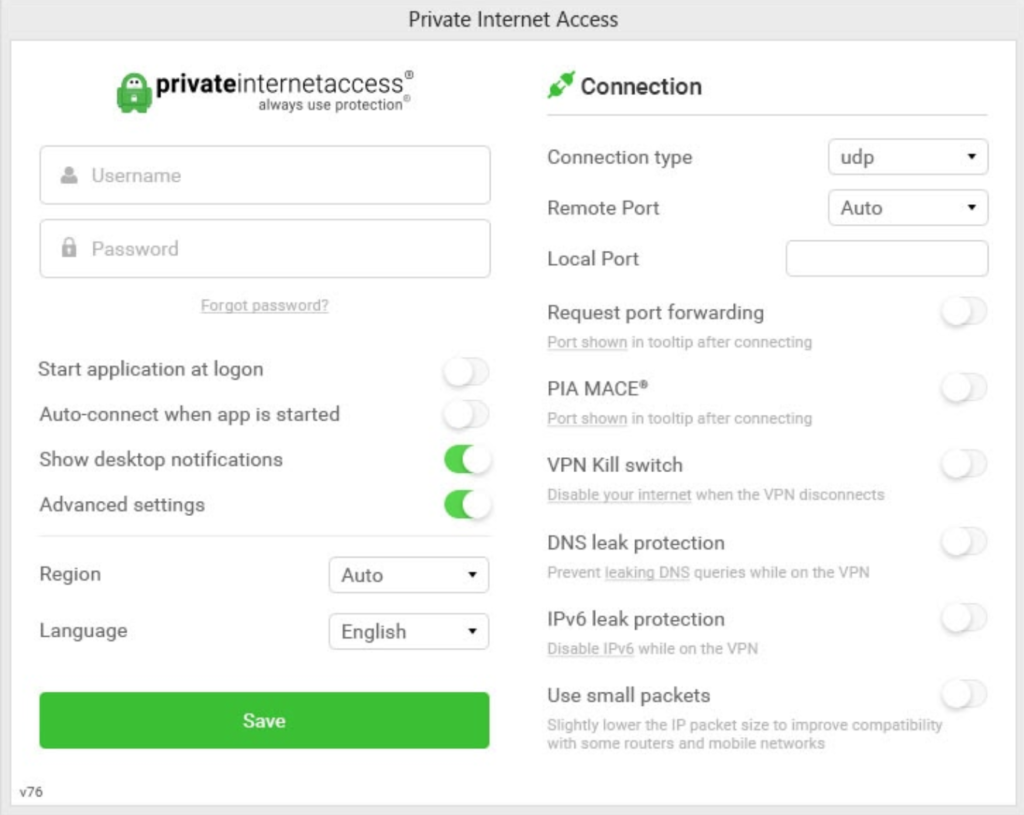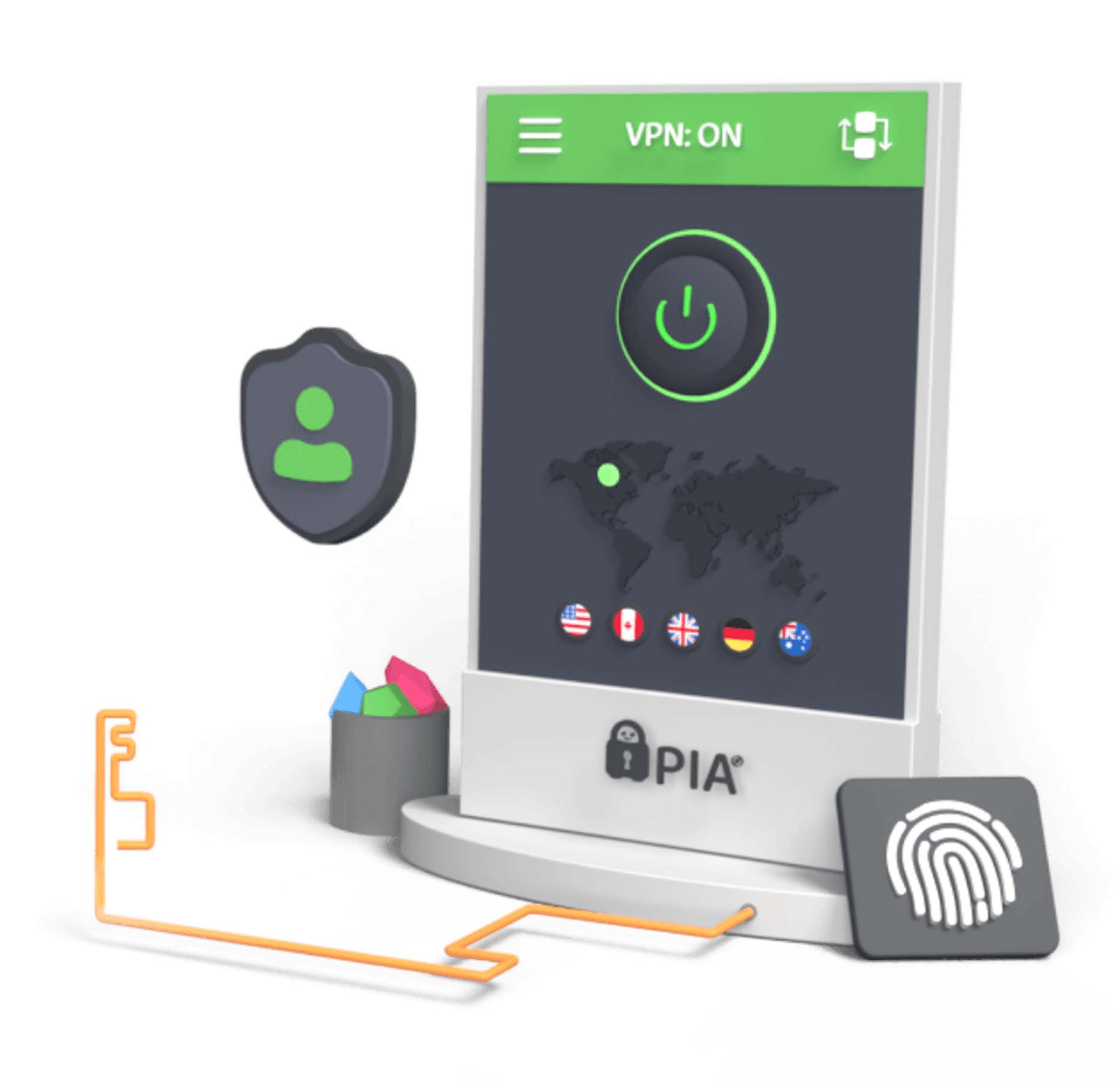Optus Mobile Review ALDI Mobile Review Amaysim Mobile Review Belong Mobile Review Circles.Life Review Vodafone Mobile Review Woolworths Mobile Review Felix Mobile Review Best iPhone Plans Best Family Mobile Plans Best Budget Smartphones Best Prepaid Plans Best SIM-Only Plans Best Plans For Kids And Teens Best Cheap Mobile Plans Telstra vs Optus Mobile Optus NBN Review Belong NBN Review Vodafone NBN Review Superloop NBN Review Aussie BB NBN Review iiNet NBN Review MyRepublic NBN Review TPG NBN Review Best NBN Satellite Plans Best NBN Alternatives Best NBN Providers Best Home Wireless Plans What is a Good NBN Speed? Test NBN Speed How to speed up your internet Optus vs Telstra Broadband ExpressVPN Review CyberGhost VPN Review NordVPN Review PureVPN Review Norton Secure VPN Review IPVanish VPN Review Windscribe VPN Review Hotspot Shield VPN Review Best cheap VPN services Best VPN for streaming Best VPNs for gaming What is a VPN? VPNs for ad-blocking Strangely, when I first loaded PIA VPN, the auto-detected nearest server was in New Zealand rather than Sydney (where I’m based). Eventually, Private Internet Access corrected to prioritising an Australian server, but that server was in Melbourne. In fairness, connecting to the Sydney server wouldn’t have been ideal as, on that first day and throughout my testing period, the Sydney server had consistently high latency. It’s a great touch that PIA VPN offers latency values, colour coding them either green for good (anything below 150ms) or orange for less great. For context, the Sydney latency initially claimed to be at 137ms but was actually at 232ms when I tested my connection; on later days, the latency was listed more accurately in the 230+ range but never dropped to acceptable green levels. It’s a shame because PIA VPN is a speedy connector (about four seconds) and disconnector (two seconds), with a few seconds of breathing space to allow for your internet to catch up. Also add a couple of extra seconds for connections to the US or UK. I’m labouring the point on the Sydney server for two reasons. First, this has never happened before with my VPN tests. Second, Private Internet Access claims to have 28,000+ VPN and proxy servers in 104 locations across 78 countries (77 countries by my count from the ones available). That country and location count is decent, but the server count blows every other VPN we’ve reviewed out of the water, with the closest contender being the 7,000+ from CyberGhost VPN. While that server count is impressive, it’s strange that the Sydney servers are consistently slow and, additionally, that Australia only warrants connection options for Melbourne, Perth and Sydney. PIA VPN’s user interface is incredibly straightforward across Windows and Android (for my tests). It’s a little cleaner on Android but, whichever you’re using, connecting or disconnecting is as simple as tapping the big green connection button, while switching servers is as easy as bringing up the server list and connecting to a new server with another tap. Unlike other VPNs, PIA VPN plays nice with all of my day-to-day online software, including peer-to-peer tools like Slack and, yes, it performed admirably in my torrent tests. PIA VPN also has a decent range of supported devices, which you can see below: To test all of this with PIA VPN, I use my Superloop NBN 100/40Mbps Fibre-to-the-Curb home internet connection. The table below highlights how Private Internet Access handles server connections in Australia, the US and the UK. For context, my NBN connection is capable of max download speeds of 99.02Mbps and upload speeds of 44.34Mbps (though the copper cabling in my building stops me from achieving these speeds). Normally, this is where I introduce a table that gives an idea of how Private Internet Access should work with different NBN speed tiers. But given it doesn’t work at all with BBC iPlayer while Netflix US and Hulu only have partial support (with slow buffering speed for Netflix), it doesn’t feel like an accurate indication of real-world use. If you’re after a VPN service for streaming, don’t go with Private Internet Access. PIA VPN scores another easy win in terms of some basic numbers, with more servers (28,000+ vs 5,400) in more countries (78 vs 59) and with more simultaneous device connections (10 vs six). Both VPN services have zero-log policies, Smart DNS options, split tunnelling and browser extensions as well as anti-malware inclusions. Both VPN services also have high levels of encryption, 24/7 tech support and a 30-day money-back guarantee. With so many wins and draws between the two, it makes Private Internet Access seem like a no-brainer victor, but things start to fall apart for PIA VPN when it comes to other comparisons. NordVPN has a faster connection to Australian servers with better percentage changes for download (4% vs 6%) and upload (3% vs 6%), plus faster overall download speeds to international servers. It’s worth noting that if upload speed is more important to you, PIA VPN is the better choice because NordVPN has slow upload speeds, particularly to US servers. When it comes to streaming, NordVPN is hands down the better choice, which also carries over to my recommendation between the two VPN services: go with NordVPN.









